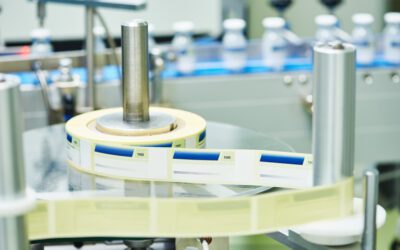Reviewed and Approved by Tim Lombardo, Senior Director, Food Consulting Services, EAS Consulting Group, a Certified Group Company.
1-Minute Summary
- Food fraud seeks economic gain; food defense helps prevents intentional harm.
- Fraud focuses on supply chains; defense secures facilities.
- Both require different assessment tools and mitigation strategies for food safety and brand protection.
Food Fraud vs. Food Defense: Understanding the Differences
In food safety, food fraud vs food defense are two critical concepts with distinct goals.
While both aim to protect the food supply, they differ in intent, focus, and regulatory frameworks. Understanding these differences ensures your food safety management system is robust and compliant.
Let’s explore how food defense vs food fraud compare and the tools needed to address them.
What is Food Fraud?
Food fraud is the intentional deception of consumers for economic gain, often at the expense of product authenticity and safety.
While not designed to harm, its consequences can pose public health risks. Examples include…
- Diluting honey with cheaper syrups.
- Treating lower-quality food to mimic premium products, like the “Vitamin Tuna” scandal.
- Falsely labeling conventional food as organic.
Food fraud is regulated under frameworks like FSMA’s Preventive Controls for Human Food (PCHF) and the Foreign Supplier Verification Program (FSVP). Additionally, GFSI standards (e.g., SQF, BRCGS) mandate food fraud vulnerability assessments.

What is Food Defense?
Food defense focuses on protecting food from intentional acts intended to harm consumers or disrupt supply chains.
Although rare, deliberate contamination incidents can have catastrophic consequences. Notable cases include…
- UK Baby Food (2020): A man placed metal shards in baby food during an extortion attempt, prompting recalls and a 14-year prison sentence.
- Australian Strawberries (2018): Sewing needles were found in strawberries, causing widespread panic and financial losses.
In today’s interconnected global food system, vulnerabilities are heightened. The FSMA Intentional Adulteration (IA) Rule was implemented to safeguard against such threats.
Key Differences: Food Fraud vs Food Defense
Here’s a simple matrix summarizing the distinctions between these two concepts:
| Aspect | Food Defense | Food Fraud |
| Primary Intent | Cause harm to consumers or supply chain disruption | Gain economic advantage |
| Focus | Facility security and operational safety | Supply chain integrity and ingredient authenticity |
| Examples | Tampering, sabotage, terrorism | Adulteration, mislabeling, counterfeiting |
| Regulatory Frameworks | FSMA Intentional Adulteration (IA) Rule | FSMA Preventive Controls for Human Food (PCHF), Foreign Supplier Verification Program (FSVP); GFSI-benchmarked certifications |
| Assessment Tool | Food Defense Plan | Food Fraud Vulnerability Assessment |
| Mitigation Strategies | Physical security, monitoring, access controls | Supplier audits, traceability systems |
Mitigation: Food Fraud Vulnerability Assessment vs. Food Defense Plan
Addressing these threats requires tailored tools: a Food Fraud Vulnerability Assessment and a Food Defense Plan.
Food Fraud Vulnerability Assessment
This assessment evaluates risks across the supply chain to identify opportunities for fraud and help close gaps. Discover how to perform a Food Fraud Vulnerability Assessment here. Steps include…
- Analyzing Ingredients: Assess the history of fraud, supply chain complexity, and traceability.
- Scoring Risks: Use metrics like geographic sourcing risks or supplier reliability.
- Implementing Controls: Perform supplier audits, verify authenticity through testing, and establish robust traceability.
For example, turmeric, which has a history of adulteration with lead chromate, may require stricter supplier controls and regular testing to ensure its authenticity compared to other ingredients.

Food Defense Plan
This plan focuses on facility security to prevent intentional contamination. We explain how to create a Food Defense Plan here. Key steps include…
- Vulnerability Assessments: Use tools like CARVER + Shock to evaluate risks in areas like loading docks and storage.
- Mitigation Strategies: Examples include biometric access controls, tamper-evident packaging, and surveillance.
- Monitoring and Verification: Conduct regular audits and use automated systems to monitor controls.
For example, a facility might secure its loading dock with CCTV cameras and keycard access to prevent unauthorized access, minimizing risks of sabotage.
Food Defense vs Food Fraud – The Final Word
While food defense and food fraud plans address different threats, both are equally important:
- Food defense protects against malicious harm.
- Food fraud ensures product authenticity and supply chain integrity.
Recent incidents, such as tampering with baby food and fraudulent tuna treatments, emphasize the need for robust safety measures. By implementing both food fraud vulnerability assessments and food defense plans, organizations can safeguard consumers, operations, and brand reputation.
Need guidance? Contact EAS Consulting Group, a Certified Group company, to ensure your strategies meet regulatory and industry standards.


